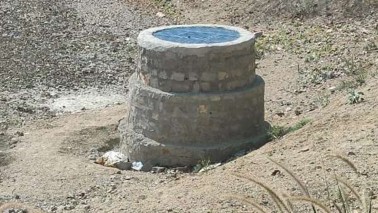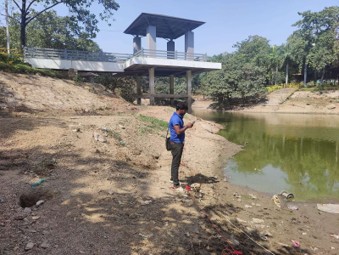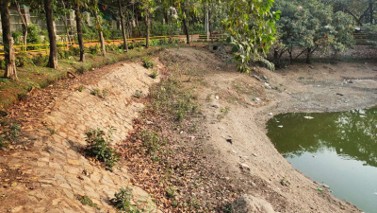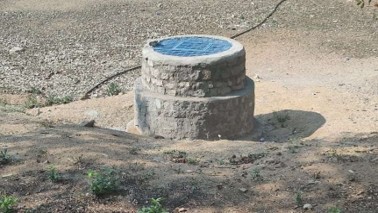Client
Amrut 2.O, MOHUA
Location
SR Nagar
Type
–
Site Area
29,374 sq. meters
Rooftop Area
–
Annual Rainwater Potential
1.7 cr litres
Result - Savings Annually
1.19 cr litres
Rainwater Saved
INR 2380400
Monetary Savings
2164
Water Tankers Saved




Problem
At KLN Yadav Park, natural drainage lines have been altered, allowing only a portion of freshwater and floodwater to reach the lake, while untreated grey and black water from nearby areas is being discharged into it through mixed-use storm drains. This is contaminating both the lake and underlying groundwater, which is concerning as the lake lies in a key recharge zone. The area’s subsurface, including weathered and fractured granite layers, has the potential to store water, but natural recharge is limited due to the presence of impervious hard granite. Despite this, fresh rainwater runoff within the catchment is not being utilized for recharge. Moreover, GHMC’s proposal to convert the lake into a boating facility by lining its bottom and banks would block natural percolation, significantly reducing groundwater recharge and likely causing premature drying of local borewells—posing a serious risk to sustainable water management in the area.
Solution
The proposed solution focuses on two key aspects: aquifer management and groundwater recharge. First, to ensure water quality, GHMC should prevent the entry of grey and black water into storm drains leading to the lake by inspecting the drainage network and monitoring contamination sources. The current plan to convert the lake into a boating facility should be reconsidered, as it would hinder natural recharge and negatively impact local groundwater availability. Second, to enhance recharge, freshwater runoff from KLN Yadav Park can be harvested using simple recharge pits, capturing 40–60% of the annual 0.85 crore litres generated during monsoons. Additionally, roof runoff from nearby zones (totalling 6.2 crore litres annually) can be directed to injection bore wells recharge pits(10–18 m deep) at identified locations. If the boating lake plan proceeds, it must integrate regulated recharge techniques and nature-based treatment systems to maintain water levels while protecting groundwater quality.

